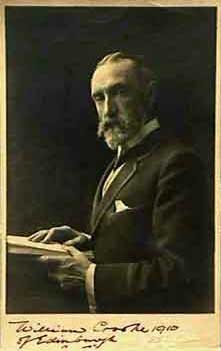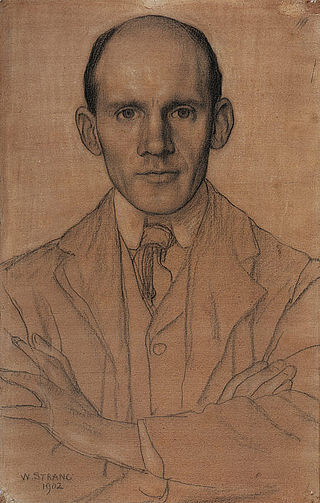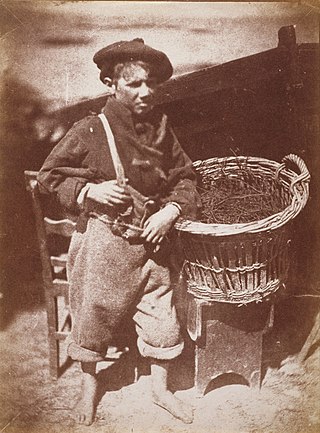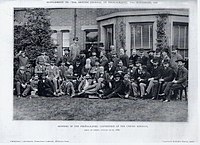
Sir William de Wiveleslie Abney was an English astronomer, chemist, and photographer.

Henry Peach Robinson was an English pictorialist photographer best known for his pioneering combination printing - joining multiple negatives or prints to form a single image; an early example of photomontage. He joined vigorously in contemporary debates in the photographic press and associations about the legitimacy of 'art photography' and in particular the combining of separate images into one.

Francis Frith was an English photographer and businessman. Francis Frith & Co., the company he founded in 1860 with the initial goal of photographing every town and village in England, quickly became the largest photographic publishers in the world and eventually amassed a collection of 330,000 negatives covering over 7,000 population centres across Great Britain and Ireland.

The Royal Photographic Society of Great Britain, commonly known as the Royal Photographic Society (RPS), is one of the world's oldest photographic societies. It was founded in London, England, in 1853 as the Photographic Society of London with the objective of promoting the art and science of photography, and in 1853 received royal patronage from Queen Victoria and Prince Albert.
Derby is a former United Kingdom Parliamentary constituency. It was a constituency of the House of Commons of the Parliament of England, then of the Parliament of Great Britain from 1707 to 1800 and of the Parliament of the United Kingdom from 1801 to 1950. It was represented by two members of parliament. It was divided into the single-member constituencies of Derby North and Derby South in 1950.

Valentine Blanchard was a prominent English photographer who was widely recognized for his artistic and technical contributions to photography in the 1860s. Both his landscape and his portrait photography were highly valued by the public, commanding high prices and selling well. He was much appreciated by his peers for the technical innovations he pioneered in photographic processes.

William Crooke (1848–1928) was a professional photographer with a studio in Edinburgh.
Two of the best-known portrait photographers in England [sic Britain], William Crooke of Edinburgh and Walter Barnett of London sailed on December 17 for a six weeks' tour of the United States, during which they plan to visit some of the leading professionals of New York, Philadelphia, Baltimore, Washington, Pittsburg, St Louis, Chicago, Milwaukee, Niagara Falls, Buffalo, Rochester, Boston, and other places.
These gentlemen were asked by some of their American friends to bring collections of their portrait work.
Accordingly, Mr Crooke will have with him about sixty of his large pictures, made within the last few years, many of which have been shown at the exhibitions of the Royal Photographic Society and the Salon.

William England was a successful Victorian photographer specialising in stereoscopic photographs.

Alfred Seaman was a professional Victorian and Edwardian photographer who ran a network of photographic portrait studios in the Midlands and North of England. He published a large series of stereoscopic photographs of Great Britain, Ireland and the Isle of Man.

The Boston Camera Club is an amateur photographic organization in Boston, Massachusetts. Founded in 1881, it offers activities of interest to amateur photographers, in both digital and film photography. Supported by member dues, its programs are open free to the public.

Richard Keene was an early Derbyshire photographer. He was a founding member of The Derby Photographic Society in 1884 and the Photographic Convention of the United Kingdom in 1886 as well as being an early member of The Linked Ring.

James Craig Annan was a pioneering Scottish-born photographer and Honorary Fellow of the Royal Photographic Society.
The British Journal of Photography (BJP) is a magazine about photography, published by 1854 Media. It includes in-depth articles, profiles of photographers, analyses, and technological reviews.

Catharine Weed Barnes was an early American photographer who later lived in England. She was a strong supporter of women photographers.

Scotland played a major role in the technical development of photography in the nineteenth century through the efforts of figures including James Clerk Maxwell and David Brewster. Its artistic development was pioneered by Robert Adamson and artist David Octavius Hill, whose work is considered to be some of the first and finest artistic uses of photography. Thomas Roger was one of the first commercial photographers. Thomas Keith was one of the first architectural photographers. George Washington Wilson pioneered instant photography and landscape photography. Clementina Hawarden and Mary Jane Matherson were amongst the first female photographers. War photography was pioneered by James MacCosh, James Robertson, Alexander Graham and Mairi Chisholm.
Richard Reynolds, FCS, was an English pharmaceutical chemist, optician, instrument maker, and X-ray pioneer.

Archibald Burns (1831–1880) was a Scottish photographer based in Edinburgh, Scotland, and active from 1858 to 1880. He documented the city through various publications and recorded the historic buildings in a section of the city that was cleared for improvements in the 1860s.
Cornelius Jabez Hughes was a British photographer, daguerreotypist, and writer. He was one of the best known portrait photographers in Victorian England, and today his photographs are included in a number of notable museum collections including the National Portrait Gallery in London and The J. Paul Getty Museum in Los Angeles.

The Photogram (1894–1920) was a photography magazine published in the United Kingdom with an edition printed in America.
Godfrey Bingley (1842–1927) was a British photographer, engineer and iron founder. Bingley is remarkable for the number and quality of photographs he took around the United Kingdom and abroad.
















